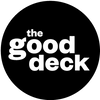What is it?
Cluster brainstorming, also known as cluster mapping or mind mapping, is a creative technique used to generate, organize, and visualize ideas, concepts, or information. It's a non-linear brainstorming method that encourages free thinking and exploration of various ideas related to a central topic or problem.
In the early stages of planning a presentation, cluster brainstorming can help generate key messages, themes, and topics. It starts by creating a central node representing the main message or goal of the presentation and then branching out to explore related concepts, supporting points, and examples.
As ideas accumulate, cluster mapping becomes an effective way to organize and structure your presentation's content. You can group related ideas into clusters, providing a clear visualization of the logical flow of your presentation. This visual representation acts as a roadmap for structuring slides and crafting a cohesive storyline.
Cluster brainstorming can also inspire the creation of engaging visuals and graphics for your presentation. Adding mind map-style graphics to your slides can make complex ideas more understandable and memorable. If you're working with a team on presentation development, cluster brainstorming supports collaborative idea generation, with team members adding their insights to the map in real-time.
When to use it
|
Remember to
|
Step-by-step
1 |
Define the problem or topic Clearly state the problem you want to brainstorm about or specify the topic you want to explore. Be as specific as possible. |
2 |
Gather materials You'll need a large surface to write down ideas where everyone can see them. A whiteboard, flip chart paper, or a large piece of paper on the wall will work well. |
3 |
Create a central idea or node Write the central idea or topic in the center of the paper or whiteboard. This will serve as the starting point for your cluster. |
4 |
Generate initial ideas Using sticky notes or index cards, spend a few minutes brainstorming and writing down any ideas or thoughts related to the central idea. These can be keywords, phrases, or simple drawings. Don't worry about organizing them yet; the goal is to get as many ideas as possible. |
5 |
Identify key themes or categories Look at the initial ideas you've generated and identify common themes, categories, or connections between them. These themes will become the clusters. Reorganize your sticky notes or cards into their clusters, label each cluster with a keyword or phrase that summarizes the theme. |
6 |
Expand each cluster Take one cluster at a time and brainstorm further within that cluster. Write down more specific ideas, details, or potential solutions related to that cluster's theme. Use arrows or lines to connect related ideas within the cluster. |
7 |
Cross-pollinate ideas As you work through the clusters, look for connections or overlaps between them. Sometimes, ideas from one cluster can spark new ideas in another. |
8 |
Review and refine Take a step back and review all the ideas and clusters you've generated. Identify any standout ideas or solutions that are particularly promising or innovative. |
9 |
Prioritize and select Evaluate the ideas you've generated and prioritize them based on relevance, feasibility, and potential impact. Choose the ideas that you want to explore further or implement. |

